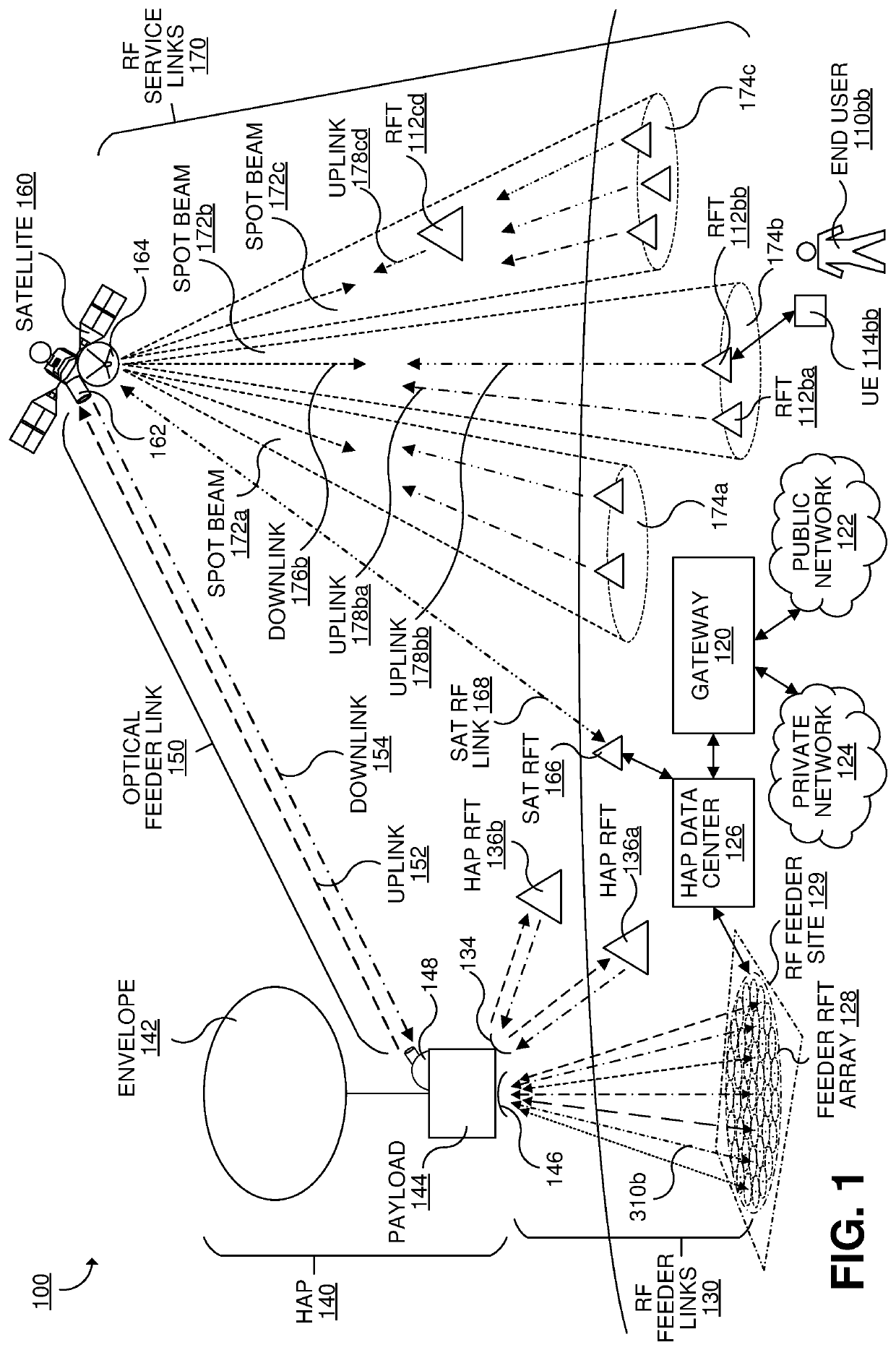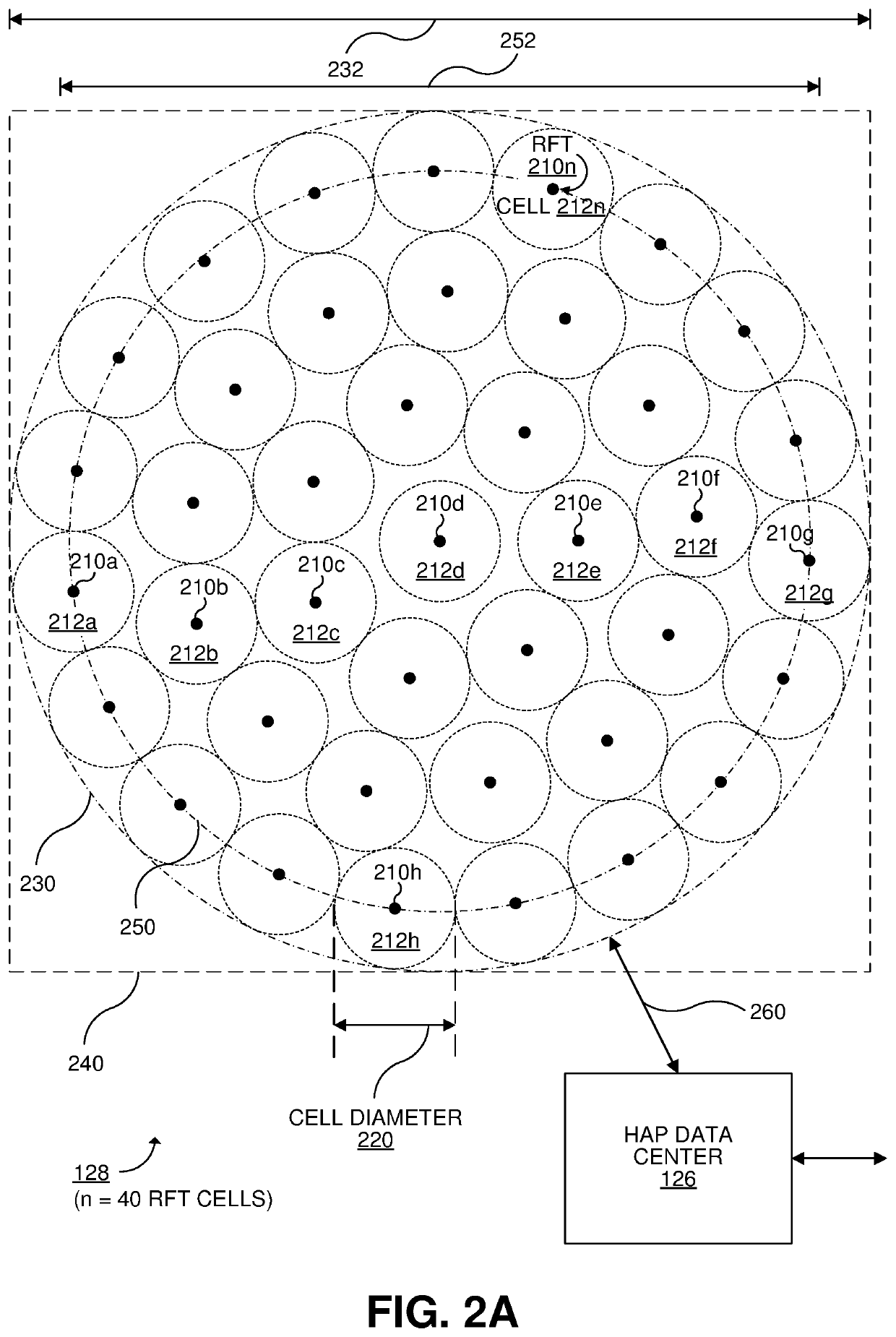Systems and methods for high-altitude radio/optical hybrid platform
a radio/optical hybrid platform and high-altitude technology, applied in the field of systems and methods for high-altitude radio/optical hybrid platform, can solve the problems of increasing the number of gateways, and generally impractical and expensive rates
- Summary
- Abstract
- Description
- Claims
- Application Information
AI Technical Summary
Benefits of technology
Problems solved by technology
Method used
Image
Examples
Embodiment Construction
[0027]In the following detailed description, numerous specific details are set forth by way of examples in order to provide a thorough understanding of the relevant teachings. However, it should be apparent that the present teachings may be practiced without such details. In other instances, well known methods, procedures, components, and / or circuitry have been described at a relatively high-level, without detail, in order to avoid unnecessarily obscuring aspects of the present teachings. To more clearly describe the disclosed subject matter, various features illustrated in the figures are not illustrated to scale, including distances or angles.
[0028]FIG. 1 illustrates an example satellite-based data telecommunication system 100 (which may be referred to as a “communication system”) configured to utilize multiple RF feeder links between a compact feeder RF terminal (RFT) array 128 and a stratospheric high-altitude platform (HAP) 140, a high capacity free space optical (FSO) feeder l...
PUM
 Login to View More
Login to View More Abstract
Description
Claims
Application Information
 Login to View More
Login to View More - R&D
- Intellectual Property
- Life Sciences
- Materials
- Tech Scout
- Unparalleled Data Quality
- Higher Quality Content
- 60% Fewer Hallucinations
Browse by: Latest US Patents, China's latest patents, Technical Efficacy Thesaurus, Application Domain, Technology Topic, Popular Technical Reports.
© 2025 PatSnap. All rights reserved.Legal|Privacy policy|Modern Slavery Act Transparency Statement|Sitemap|About US| Contact US: help@patsnap.com



